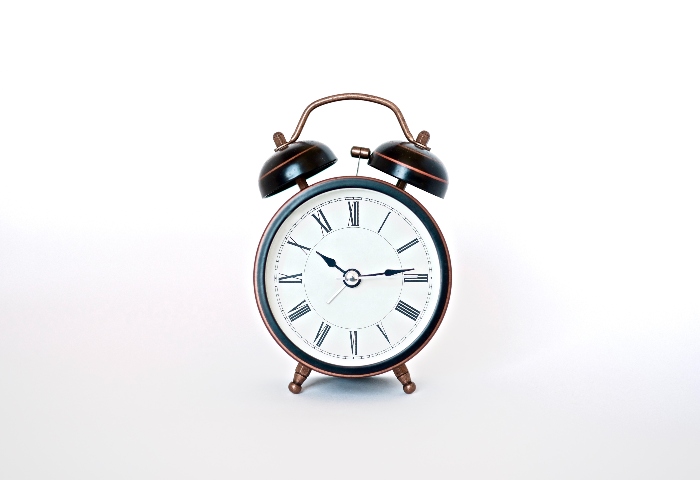Public Transit Sleep Savings: Exploring the Habits of People Commuting to Work via Public Transit vs. Driving
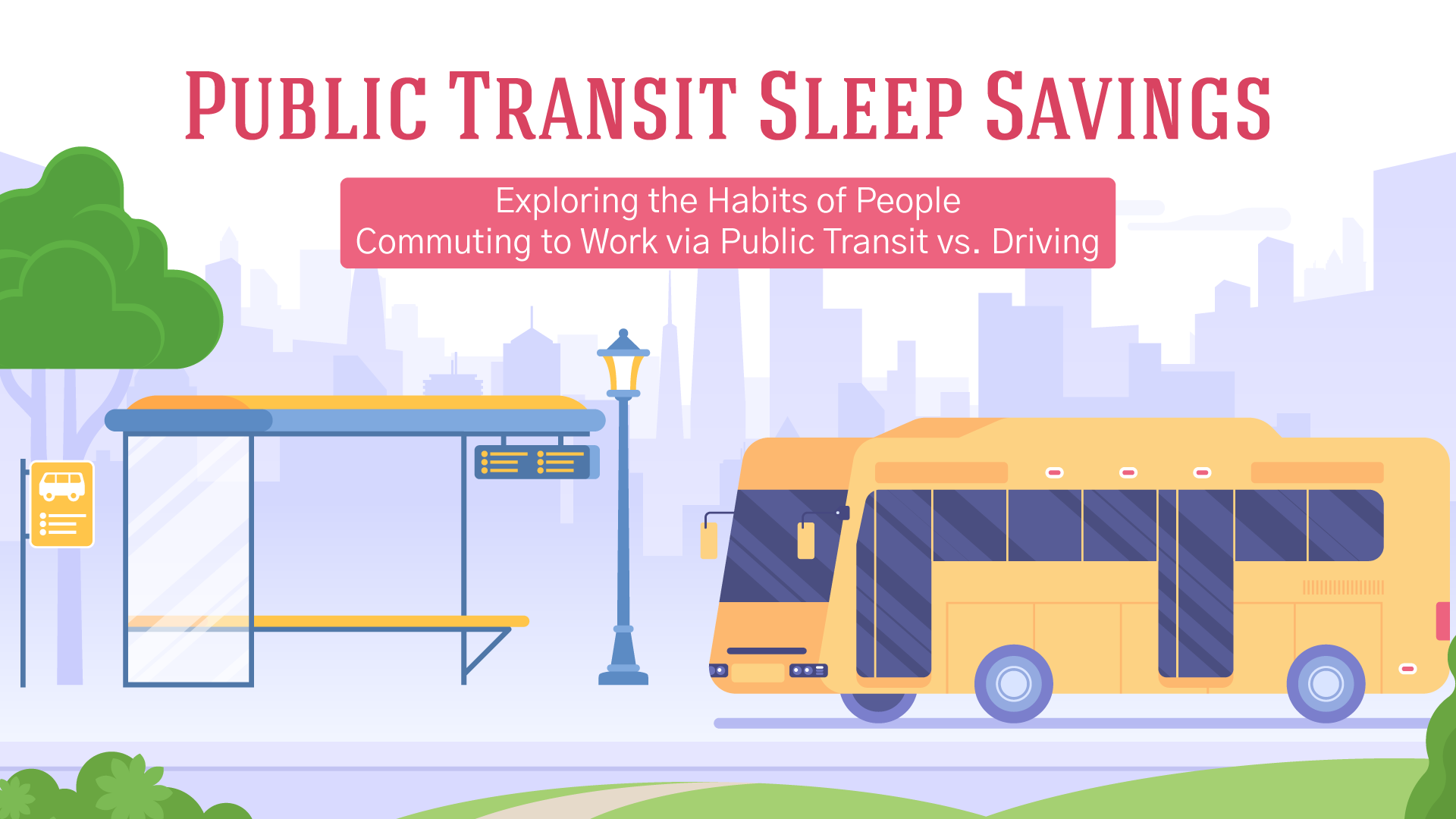
People are getting less quality sleep, which can have serious consequences. In fact, our wellness, immune system, and overall productivity can suffer when we forgo the seven to nine hours of rest recommended by the CDC for adults.
Considering this decline in sleep, do Americans commute to work based on their sleep habits? To find out, we surveyed over 1,000 people driving to work or commuting via public transit. Keep reading to see what we learned.
Public Transit vs. Private Drive
According to the American Community Survey, more than three-quarters of people drive to work alone, and 5 percent use public transit. People who live in denser metropolitan areas tend to have access to extensive transit networks, compared to those who live in sprawling areas where congestion might be scarce.
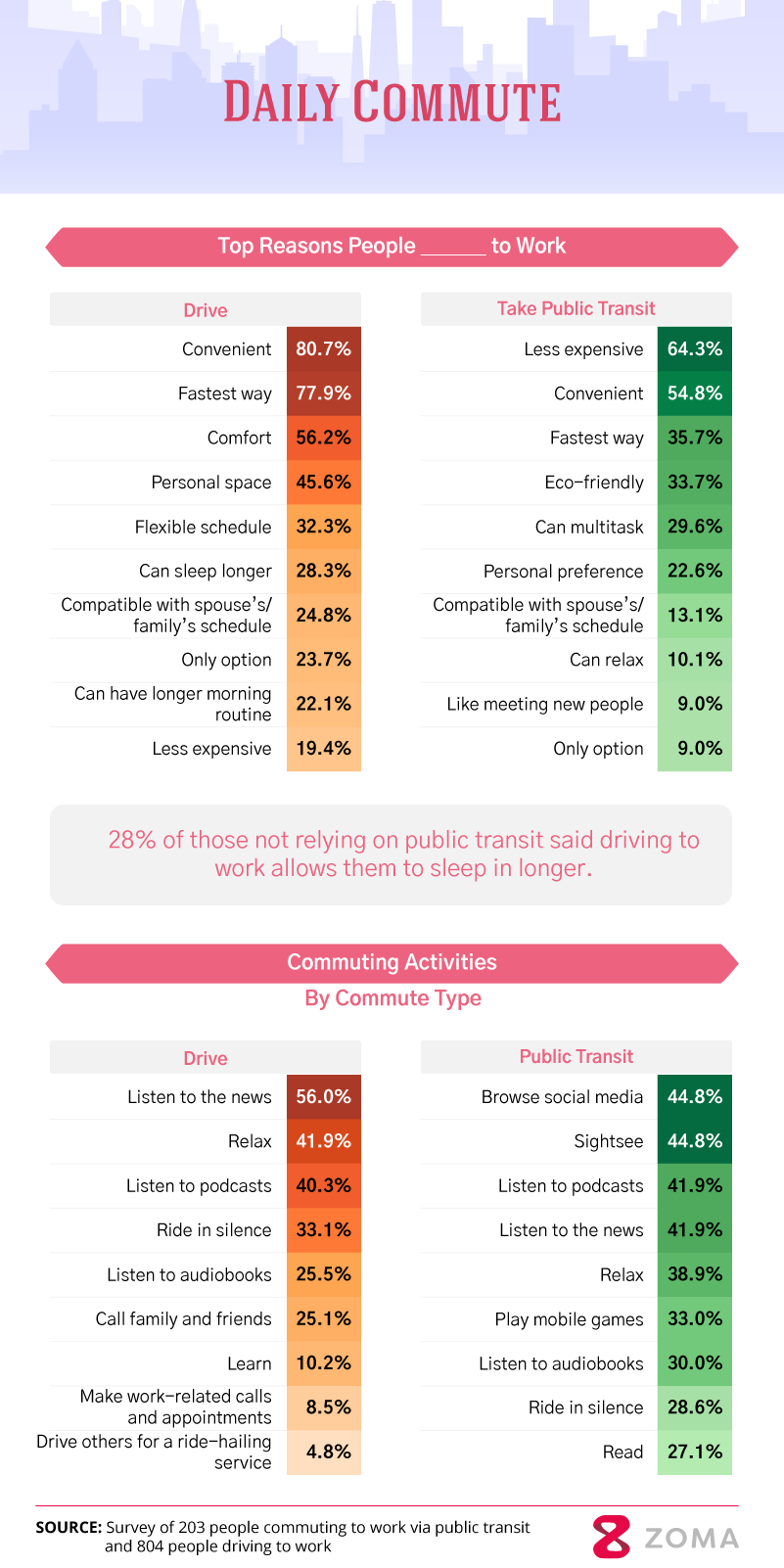
Convenience was the No. 1 reason people in our study chose to drive to work, followed by less time spent traveling (77.9 percent) and comfort (56.2 percent). Perhaps those who commute by car live in areas with less traffic, as CityLab’s findings suggest. And for 28 percent of people, driving was worth it because they got to sleep longer.
Around 64 percent of those commuting via public transit claimed it was less expensive. While some major cities, such as New York, are upping the cost of public transit, participants in our study still found this mode of transportation more cost-effective.
For about 45 percent of commuters, taking public transit allowed them to browse social media and sightsee. Forty-two percent listened to podcasts or the news, and 39 percent said they relaxed. However, more than half who drove listened to the news, and 42 percent relaxed, followed by 40 percent who listened to podcasts.
Quality of Rest
It could be how a train vibrates on the track or the stop-and-go motion of a bus, but 27 percent of people who depended on public transit to get to work reported sleeping while commuting. How much extra rest did they get? About 41 minutes round trip, which is enough time to miss your stop – and almost 1 in 4 did.
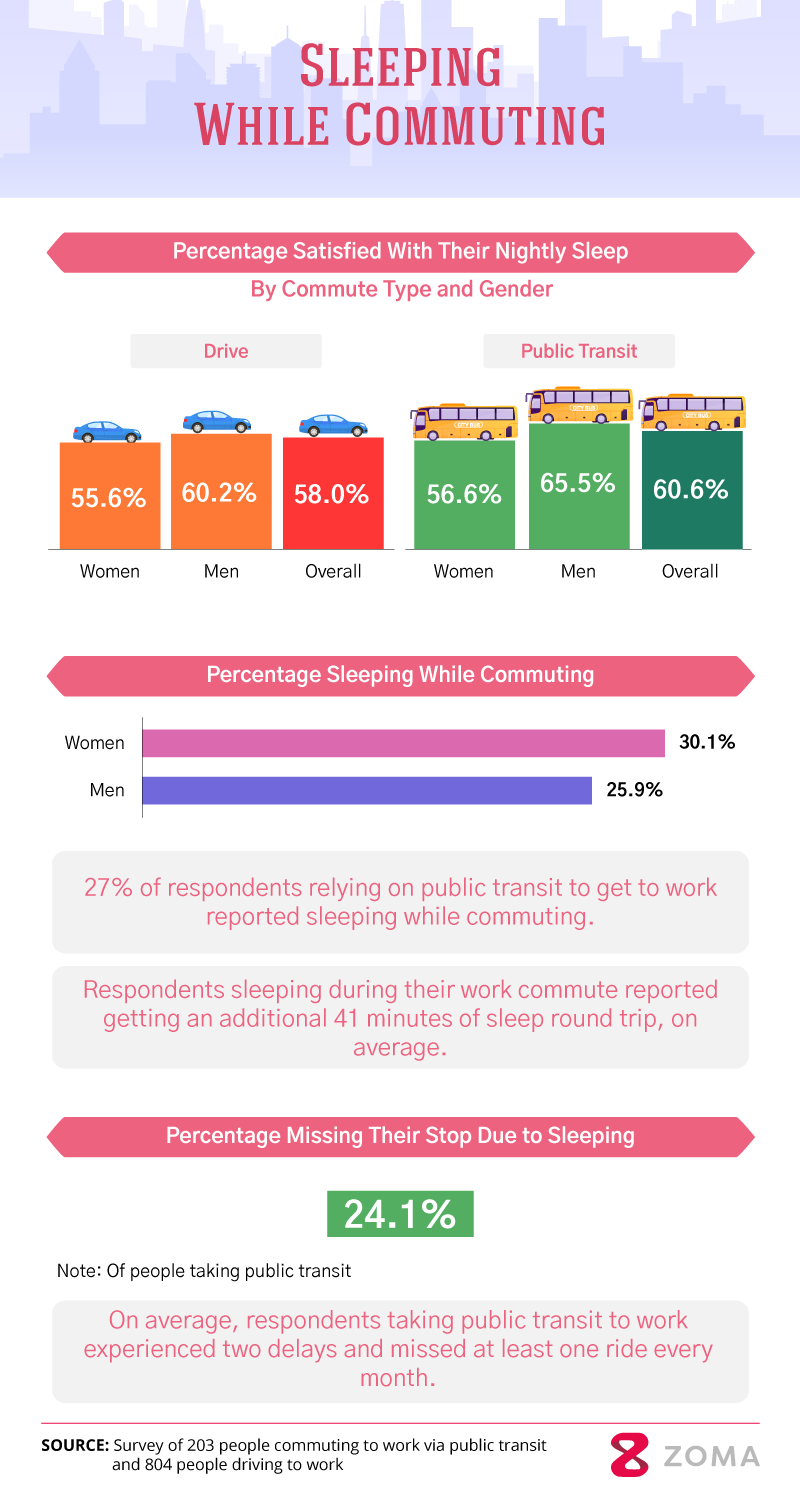
More than 65 percent of male commuters who used public transit reported being satisfied with how much sleep they got, compared to around 60 percent who drove to work. Meanwhile, 56.6 percent of women who commuted via public transit were pleased with their sleep – and 55.6 percent who went by car said the same.
Productivity on the Way
The majority of people surveyed did not work during their commute, but 1 in 5 always did. More than 57 percent who were productive on the way to the office said it saved them time at work. However, 49.4 percent of commuters worked on the way so they could get ahead.
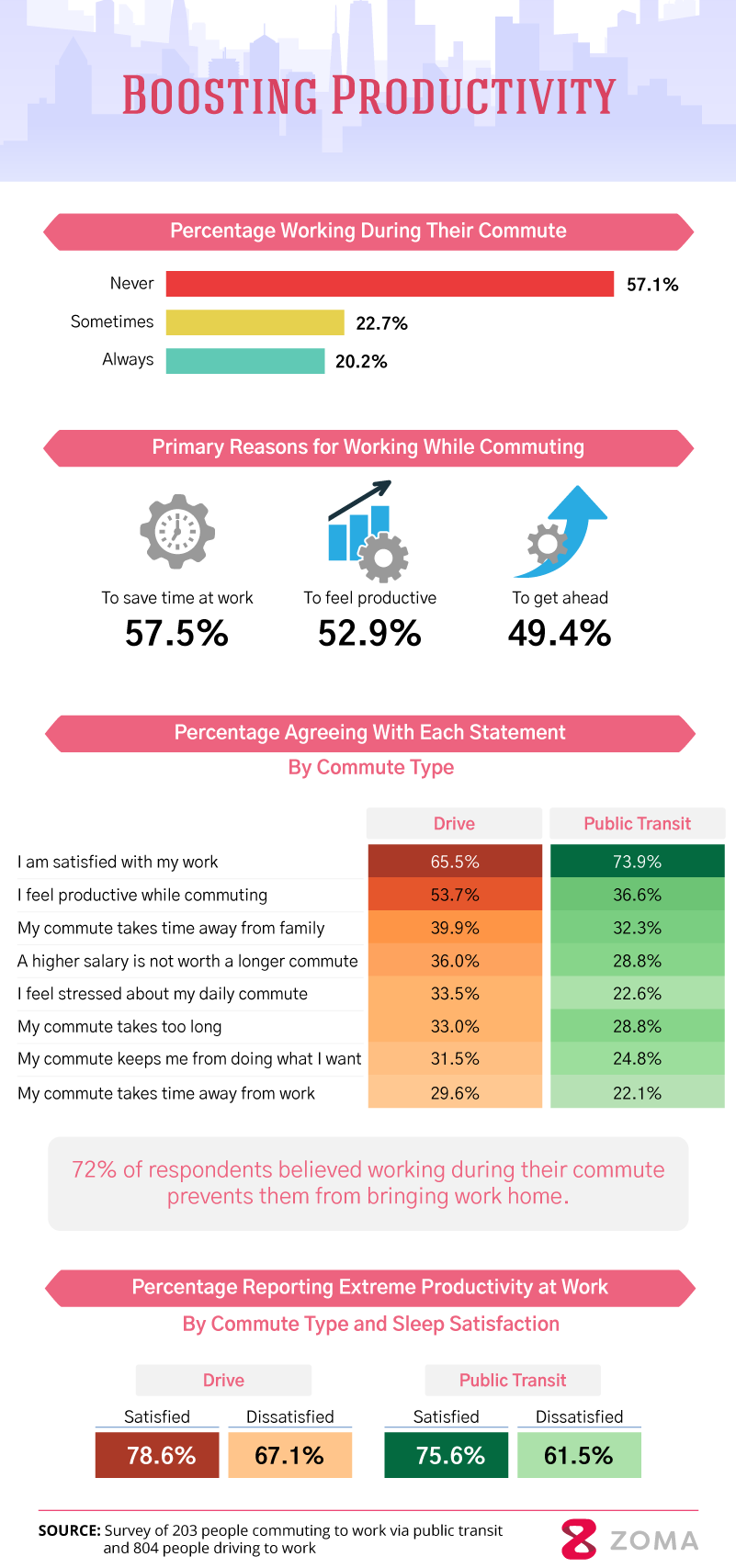
Our findings show that of people who used public transit, 73.9 percent were also pleased with their work. Less than 66 percent of those who drove said the same. However, 53.7 percent of people driving to work felt productive while commuting, compared to 36.6 percent of those using public transit.
Comparing Modes of Transportation
According to the U.S. Census Bureau’s 2019 American Community Survey, Americans spend more time commuting to work than previously, and that’s likely because our homes and workplaces are farther apart than they used to be.
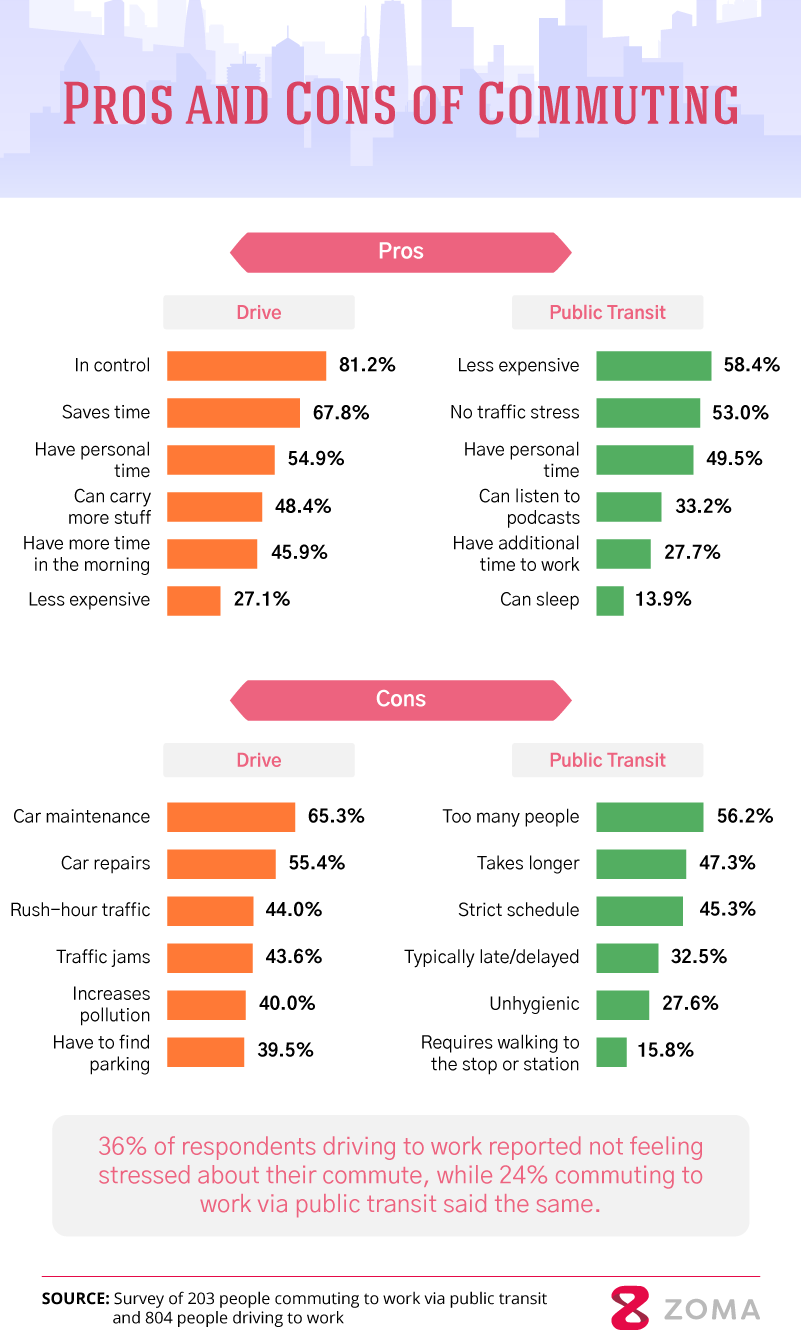
Despite spending more time on the road than ever before, participants in our study revealed the pros of driving, and they seemed to outweigh the advantages of using public transit. To start, the majority (81.2 percent) of those who drove preferred to because it put them in control – there’s no train to miss with a car at your disposal. Nearly 68 percent said it saved them time, and nearly 55 percent enjoyed the solo drive.
What was the No. 1 pro for those who used public transit? Over 58 percent said it was less expensive. But 56.2 percent disliked commuting because too many people use that mode of transportation, as well. Those who drove were most dissatisfied with car maintenance (65.3 percent), followed by car repairs and rush-hour traffic.
Going the Distance: Work Mileage
Those relying on public transit traveled fewer miles to and from the office. While a few extra miles might not seem like a lot, rush-hour traffic can move slow, which could turn an easy 2 miles into a frustrating 30-minute commute.
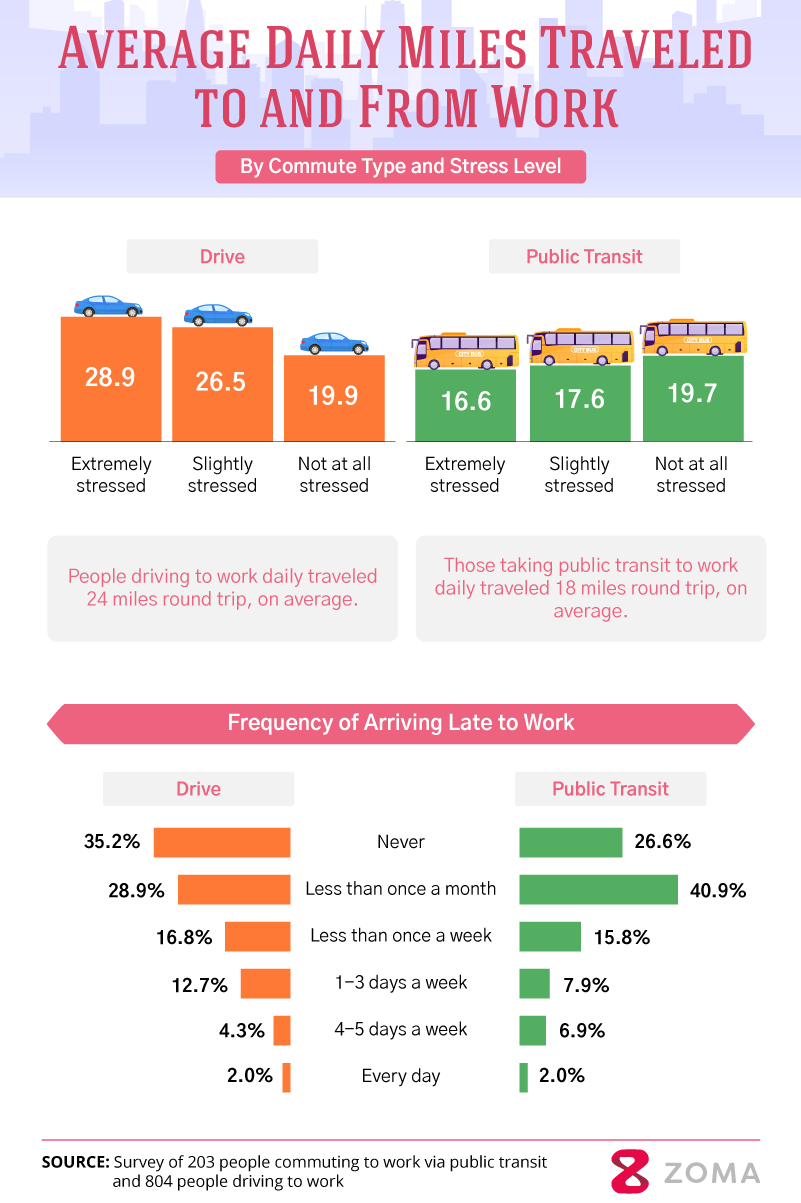
Thirty-five percent who drove reported never being late compared to 26.6 percent of public transit commuters. However, more than 12 percent of drivers were late one to three days per week – nearly twice as many compared to those using public transit.
Get More Sleep
When we sleep for seven to nine hours, the brain has enough time to flush out toxic waste. Perhaps the essential role sleep plays in our health is why many commuters in our study chose to drive to work instead of taking public transit; doing so allowed them to get more rest.
In response to our study, Zoma’s sleep expert James Nguyen said, “How Americans choose to commute to work is primarily about convenience and affordability. However, for some, choosing to drive extends sleep.”
Our team at Zoma wants to make sure you get sufficient, uninterrupted sleep. That’s why we developed a performance mattress that’s designed to facilitate deeper rest and recovery for individuals with busy and active lifestyles. Get yours and sleep easy knowing we offer a 100-night trial and 10-year full warranty.
Methodology
For this project, we surveyed 203 people who use public transit to get to work and 809 people who drive to work. Respondents who were unemployed or retired were automatically disqualified. Respondents had to answer questions about their commute habits, sleep, and work productivity.
Respondents driving to work ranged in age from 23 to 59, with an average age of 37 and a standard deviation of 9. Forty-nine percent of respondents identified as women, and 51 percent identified as men.
Respondents using public transit to get to work ranged in age from 23 to 53, with an average age of 33 and a standard deviation of 7. Forty-one percent of respondents identified as women, and 57 percent identified as men.
For short, open-ended questions, outliers were removed. To ensure that all respondents took our survey seriously, they were required to identify and correctly answer an attention-check question.
Limitations
These data rely on self-reporting by the respondents and are only exploratory. Issues with self-reported responses include but aren’t limited to exaggeration, selective memory, telescoping, attribution, and bias. All values are based on estimation.
Fair Use Statement
Getting enough sleep is essential and may improve our overall quality of life, so please share our findings for noncommercial reuse. All we ask is that you link back to this page and credit Zoma’s sleep expert, James Nguyen.
This article is for informational purposes and should not replace advice from your doctor or other medical professional.
James Nguyen, Sleep Expert 
James Nguyen is Zoma's resident sleep expert and staff writer. James enjoys learning about the newest technologies in the mattress industry and doing deep dives into the science of sleep. He's tried nearly every gadget and gizmo in an effort to determine which sleep-promoting accessories can truly enhance your shut-eye. Outside of work, James takes his dedication to get healthy sleep seriously, and has even declared himself an "expert napper." James' research has been featured on Thrive Global and other media.
View all posts



